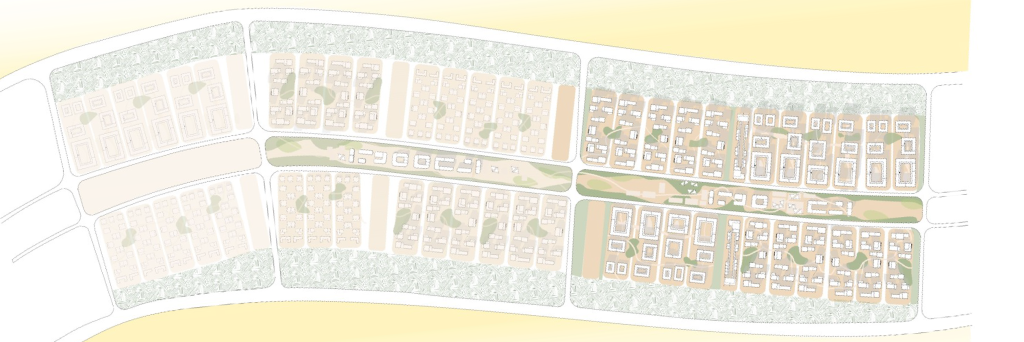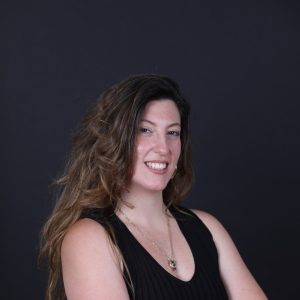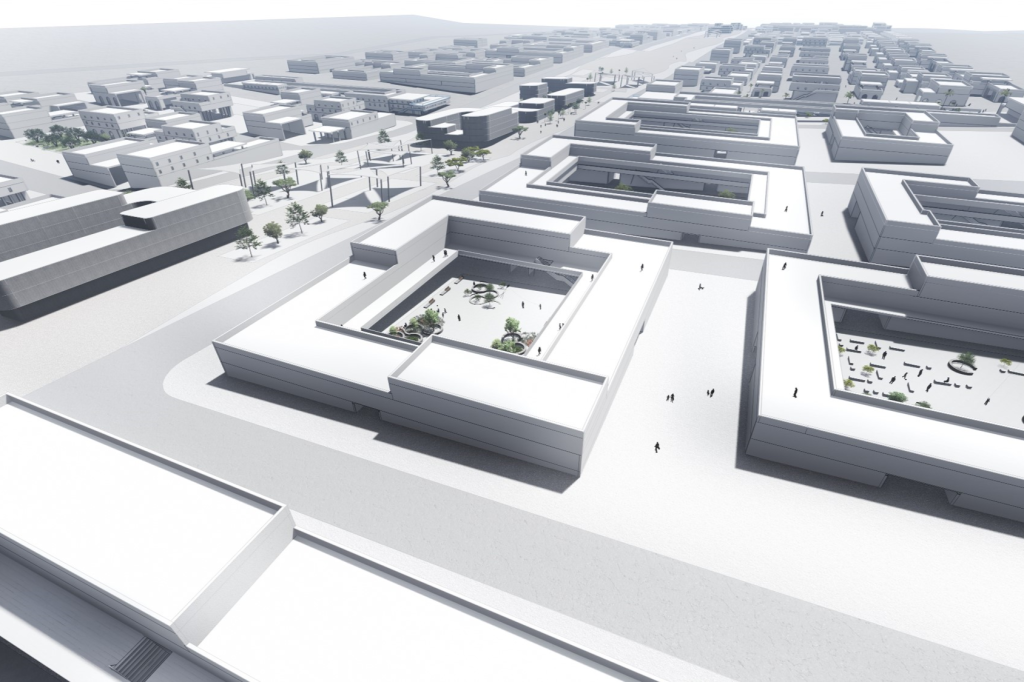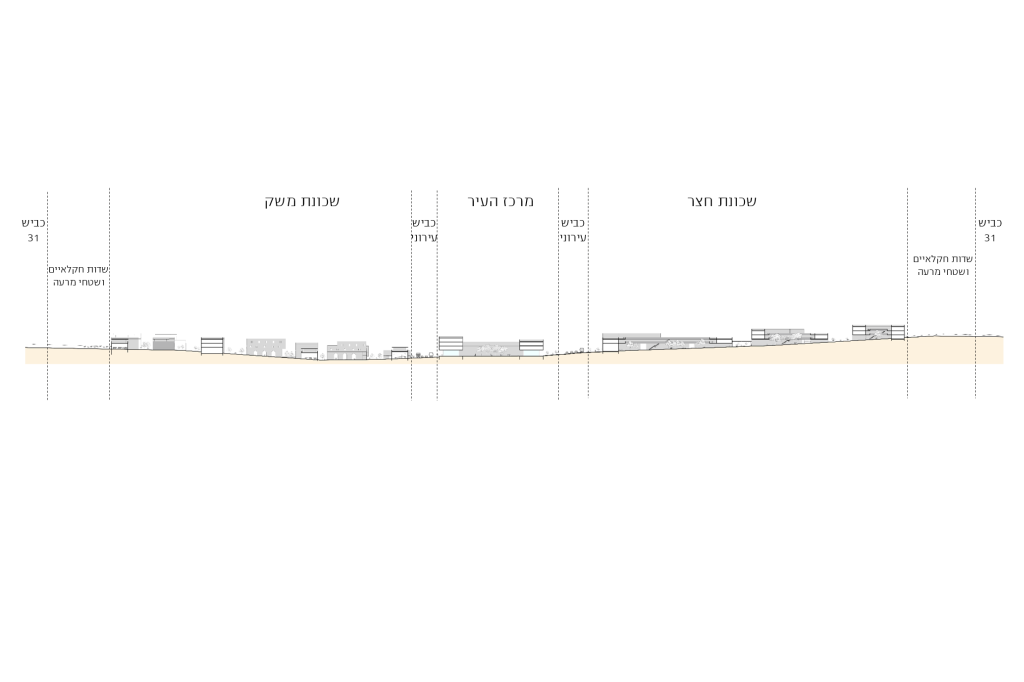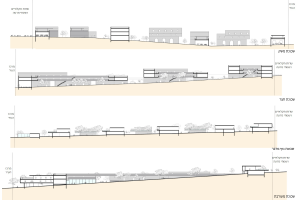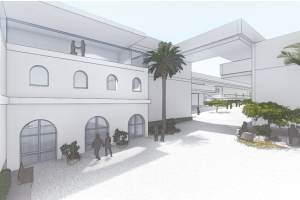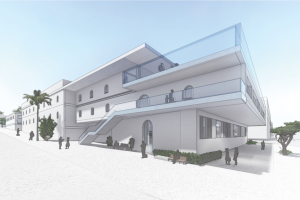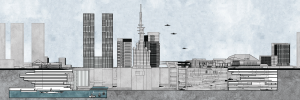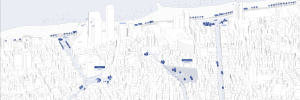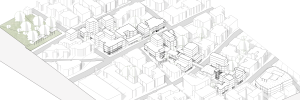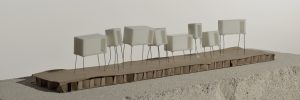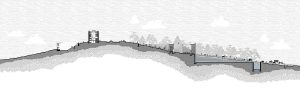Local Transportation Line
Suburban urbanity – can it exist, or is this a contradiction in terms?
In Israel it seems as if there is only one city, a city whose centrality attracts a population, activity and investments that dwarf the intensity of activity in any other city. However, for some populations, urban life does not have to be at the centre of the action. What is the nature of urbanism in such cities, which are distant from the major urban centres? How can a city that wishes to be a suburban city in advance be planned?
Arad is a city that was originally planned as a remote desert city, following a government resolution intended to settle the Negev. The city is a significant turning point in the field of urban planning in the State of Israel. In its planning, innovative architectural attempts were made in relation to what had been done so far in the country, and combined international knowledge with a local interpretation. In the first two decades of its existence, it seemed to be a success story, but today, it is considered a weak and abandoned city. The reasons for this are, among other things, the change of government, which led to a change of ideology and to the diversion of the center of gravity from the settlement of the Galilee and Negev. The control over the composition of the population also decreased, and in the early nineties, new immigrants, mainly from the Soviet Union, already made up about a quarter of the city’s residents, and the original nucleus began to disperse. Another reason is the weakening of industry in the area and the closing of factories that were a significant source of income for the city’s residents.
Future development plans in the vicinity of Arad, in an area that includes the Bedouin settlement of Kuseife and the future ultra-Orthodox city of Kasif and five other rural settlements, will only exacerbate Arad’s weakness. Therefore, it is almost required to concentrate the urban development within the city of Arad and find a place for the target populations of the existing plans in it: the ultra-Orthodox and the Bedouin. This can be done while adhering to the spatial principles that guided the establishment of Arad – primarily, the idea of the linear city.
The new city that I am proposing will stretch as a line between Arad and Kuseife, with the possibility of continuing along the same line. The city is crossed by a central boulevard, which is a continuous linear park within which most of the municipal public functions are located, and residential neighboorhoods on both its sides. Each neighboorhood is intended for a different population, but placing them next to each other or facing each other and sharing the public areas between them is expected to break, even if only partially, the social separations.
The project does not seek to create a utopian environment that is disconnected from reality, but rather present an alternative urbanism that is distant from large population concentrations – an alternative that is often disparaged or totally ignored as one in which any degree of urbanism exists. The planning also tries to address the social and spatial problems from which the populations living in Arad and its surroundings suffer today, while harnessing them, through the spatial integration between them, to define a new alternative to the intense urbanism of the urban centres.


